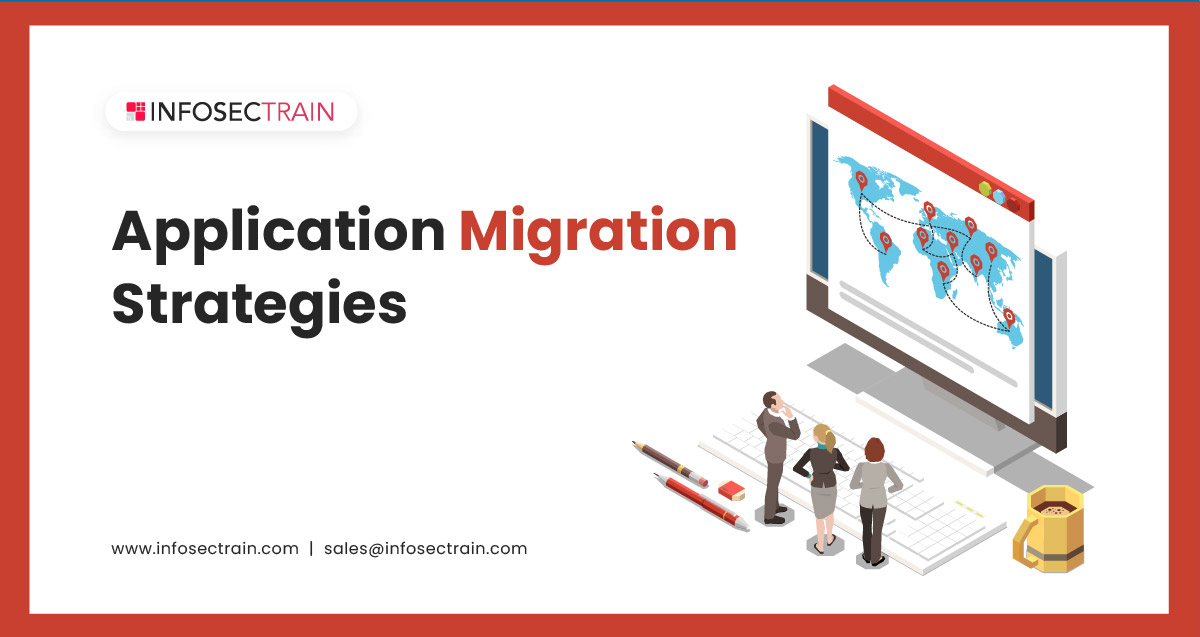Application Migration Strategies
Organizations of every size and domain are turning towards AWS because it provides modernized infrastructure services, increases competitive edge, and enhances business value. Irrespective of type, size, and business, organizations always want to keep the infrastructure updated to meet the market requirements and stand out from the competition. In this comprehensive blog, we will discuss various migration strategies of AWS.

Table of Contents
What is AWS?
What is AWS Migration?
Application Migration Strategies
How to Choose a Migration Strategy?
AWS Migration Tools and Services
What is AWS?
Amazon Web Services (AWS) is a cloud platform that provides scalable, flexible, reliable, and cost-effective cloud computing solutions. It is an easy-to-use cloud computing platform offered by Amazon, and AWS delivers organizations tools such as database storage, compute power, and other services. It was launched in 2002, initially built for retail operations, but later it has grown more prominent in providing over 200 services, of which migration is one of its services.
What is AWS Migration?
AWS Migration is the process of migrating the project objectives and data from the on-premise data center to AWS. The organization can do migration based on many factors, such as global market expansion, the need for standard architecture, hardware upgrades, data center leases, software license renewals, or location requirements to meet regulatory compliance.
Application Migration Strategies
Amazon provides seven different migration strategies categorized based on the type of architecture.
The following are the seven migration strategies in detail:
Rehost: Moving the application and rehosting it on AWS. This migration strategy is also known as “Lift and Shift.” You lift the services, move the application from the hosting environment, and shift them to the cloud without making any changes.
Example: Migrate the on-premise Oracle database to Amazon EC2 Instance in AWS cloud.
Relocate: Moving the application to the cloud without purchasing the new hardware or modifying the existing operations. This migration strategy is also known as “hypervisor-level lift and shift.”
Example: Relocate the hypervisor host application to VMware Cloud on AWS.
Replatform: Moving the application’s outdated version, modifying it, and then Rehosting it on the cloud. This migration strategy is also known as “Lift and reshape.” It involves optimizing the cloud architecture to achieve the benefits of cloud features and services.
Example: Migrate the on-premise Oracle database to Amazon RDS in the AWS Cloud.
Repurchase: Some applications are not compatible with the new architecture. So, it requires purchasing a new application for the new architecture. AWS offers a wide range of services with a “Pay as you Use” model. This migration strategy is also known as “drop and shop.” When required, you can purchase the service, upgrade, implement, and make changes to the existing architecture.
Example: Migrate the data from on-premises to Salesforce.
Refactor: Moving the application and modifying the architecture to avail the cloud-native features. It helps improve the application’s performance, agility, and scalability. This migration strategy is also known as “Re-architect.”
Example: Migrate the on-premise Oracle database to PostgreSQL.
Retain: Maintain the application in the source environment for the applications requiring refactoring and not ready to migrate to the cloud or the applications. This migration strategy is also known as “Revisit.”
Retire: After AWS Migration, remove or decommission the application in the source environment. It helps to cut the cost of maintaining the application.
How to Choose a Migration Strategy?
Choosing the migration strategy depends on the business architecture, financial constraints, and resource requirements. You can choose to rehost, refactor, or re-platform migration strategies for major database migration. For cloud-native database migration, choose to refactor to enhance the application.
Choose the migration strategy based on the complexity of the workload. AWS offers a workload qualification tool to identify the complexity of Microsoft and Oracle server database migration. It analyzes the database code and schema objects, dependencies, application code, and some inputs to recommend a migration strategy. The WQF tool also provides an estimation of the work and efforts involved.
Refer to the below table, defined by the AWS Workload Qualification Framework (WQF):
| Category | Workload | Migration Strategy |
| 1 | ODBC/JBDC workloads | Refactor |
| 2 | Light, proprietary feature workloads | Refactor |
| 3 | Heavy, proprietary feature workloads | Refactor / Replatform |
| 4 | Engine-specific workloads | Replatform / Rehost |
| 5 | Non-portable, high-risk, or lift-and-shift workloads | Replatform / Rehost |
The replatform and rehost migration strategies are best suitable for complex workloads. It is essential to choose the migration strategy based on the modernization requirements for migrating applications to the AWS Cloud.
AWS Migration Tools and Services
Here are some of the top AWS migration tools and services:
- AWS Migration Hub
- AWS Application Discovery Services
- AWS Cloud Adoption
- AWS Migration Acceleration Program
- AWS Server Migration Service
- AWS Marketplace
- AWS Database Migration Service
- VMware Cloud on AWS
Become Cloud Professional from InfosecTrain
InfosecTrain is a globally recognized ed-tech platform that offers a wide range of Cybersecurity, Information security, and Cloud online certification courses. It provides an instructor-led training program with a highly experienced instructor who guides you in understanding the concepts in detail. InfosecTrain offers many online Cloud certification training programs that help you to get a complete understanding of cloud technology.
If you want to become a cloud professional, check out our list of cloud Certification courses, choose your suitable course, and enroll to get certified.






 1800-843-7890 (India)
1800-843-7890 (India)